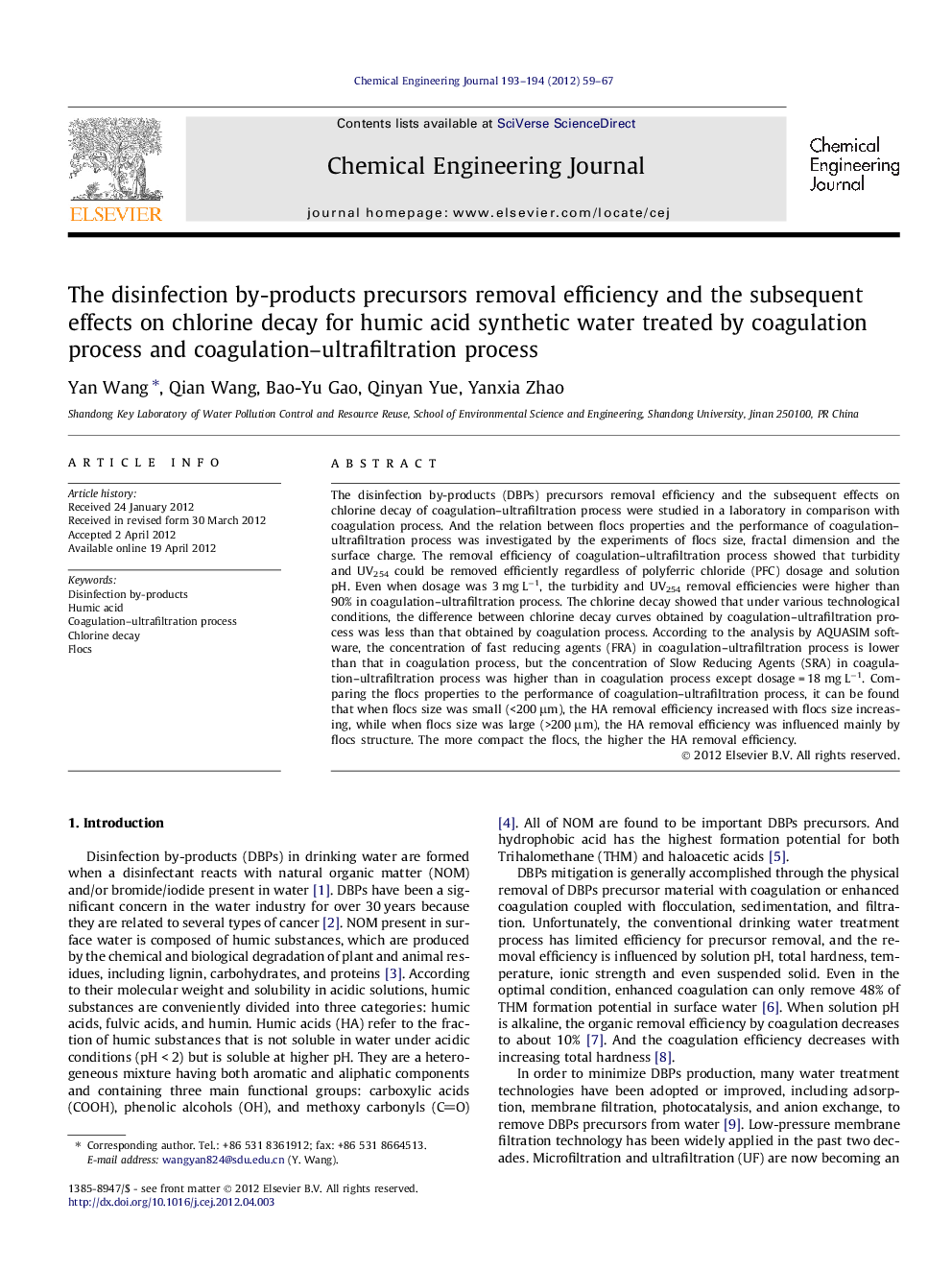| کد مقاله | کد نشریه | سال انتشار | مقاله انگلیسی | نسخه تمام متن |
|---|---|---|---|---|
| 149834 | 456439 | 2012 | 9 صفحه PDF | دانلود رایگان |

The disinfection by-products (DBPs) precursors removal efficiency and the subsequent effects on chlorine decay of coagulation–ultrafiltration process were studied in a laboratory in comparison with coagulation process. And the relation between flocs properties and the performance of coagulation–ultrafiltration process was investigated by the experiments of flocs size, fractal dimension and the surface charge. The removal efficiency of coagulation–ultrafiltration process showed that turbidity and UV254 could be removed efficiently regardless of polyferric chloride (PFC) dosage and solution pH. Even when dosage was 3 mg L−1, the turbidity and UV254 removal efficiencies were higher than 90% in coagulation–ultrafiltration process. The chlorine decay showed that under various technological conditions, the difference between chlorine decay curves obtained by coagulation–ultrafiltration process was less than that obtained by coagulation process. According to the analysis by AQUASIM software, the concentration of fast reducing agents (FRA) in coagulation–ultrafiltration process is lower than that in coagulation process, but the concentration of Slow Reducing Agents (SRA) in coagulation–ultrafiltration process was higher than in coagulation process except dosage = 18 mg L−1. Comparing the flocs properties to the performance of coagulation–ultrafiltration process, it can be found that when flocs size was small (<200 μm), the HA removal efficiency increased with flocs size increasing, while when flocs size was large (>200 μm), the HA removal efficiency was influenced mainly by flocs structure. The more compact the flocs, the higher the HA removal efficiency.
► Coagulation–ultrafiltration process performed better than coagulation process.
► Ultrafiltration reduced the fast reacted organics but not the slow reacted organics.
► The efficiency increased with flocs size increasing when size <200 μm.
► The efficiency increased with flocs compactness increasing when size >200 μm.
Journal: Chemical Engineering Journal - Volumes 193–194, 15 June 2012, Pages 59–67